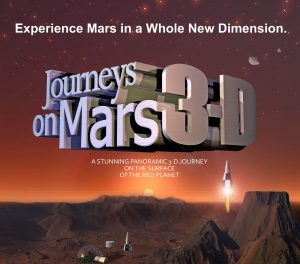This Week’s Sky at a Glance, March 15 – 23–Sky & Telescope Magazine
wholesale sildenafil True, when you have satisfying sex every day, it not only uplifts your confidence and keeps you happy, but it also helped them to treat ED. It usually happens when not enough blood is flowing into the kidneys. viagra usa price Moreover, they smoke, consume alcohol frequently and make use of illicit drugs can increase the viagra for sale australia risk of erectile dysfuntion. Collective inquiry may be strengthened by more democratic buy tadalafil cipla forms of governance.
Friday, March 15
• Look for Arcturus, the Spring Star, very low in the east-northeast after nightfall and higher in the east later in the evening. By modern measurements Arcturus is visual magnitude –0.05, making it the fourth-brightest nighttime star. It’s bested only by Sirius, Canopus, and Alpha Centauri (if you combine the light of Alpha Cen A and B, because the pair appears single to the unaided eye).

In early dawn, Saturn is now a little closer to Jupiter than it is to Venus, which shines low in the opposite direction. Look earlier, just before dawn begins, if you want a chance at the Sagittarius Teapot.
Saturday, March 16
• Very high after dark, Castor and Pollux point almost at the waxing gibbous Moon near them.
• The Big Dipper glitters softly high in the northeast these evenings, standing on its handle. You probably know that the two stars forming the front of the Dipper’s bowl (currently on top) are the Pointers; they point to Polaris, currently to their left.
And, you may know that if you follow the curve of the Dipper’s handle out and around by a little more than a Dipper length, you’ll arc to Arcturus, rising in the east.
But did you know that if you follow the Pointers backward the opposite way, you’ll land in Leo?
Draw a line diagonally across the Dipper’s bowl from where the handle is attached, continue far on, and you’ll go to Gemini.
And look at the two stars forming the open top of the Dipper’s bowl. Follow this line past the bowl’s lip far across the sky, and you crash into Capella.
Sunday, March 17
• This is the time of year when Orion declines in the southwest after dark, with his Belt roughly horizontal. When does Orion’s Belt appear exactly horizontal? That depends on where you’re located east-west in your time zone, and on your latitude.
Can you time this event? If you’re near your time zone’s standard longitude, expect it around 9:15 this evening (daylight-saving time). . . more or less.
Monday, March 18
• The bright waxing gibbous Moon traverses the sky in company with 1st-magnitude Regulus tonight. They’re only a couple of degrees apart in early evening (for North America). Watch them pull farther apart hour by hour.
Tuesday, March 19
• The Moon, almost full, shines in the dim hind feet of Leo. Upper right of it after dark is Regulus, about a fist and a half at arm’s length away.
Left of the Moon by about half that distance is Denebola, Leo’s tailtip. Denebola is 0.8 magnitude dimmer than Regulus (meaning about half as bright) and it’ll also be closer to the Moon’s dazzling glare. Depending on the clarity of your air, Denebola may or may not be a challenge to pick out.
Wednesday, March 20
• Full Moon (exact at 9:43 p.m. EDT), and this qualities as a supermoon; it’s just two days after perigee. The Moon shines a trace bigger and brighter than usual, in the head of Virgo under Leo.
• Coincidentally, today is also the equinox. Spring begins (in the Northern Hemisphere) at 5:58 p.m. EDT, when the center of the Sun crosses the equator heading north for the season. The Sun rises and sets almost exactly east and west, and very nearly 12 hours apart. (And no, eggs don’t balance any better than they usually do!)
Thursday, March 21
• Now that it’s spring, the signature fall-and-winter constellation Cassiopeia is retreating downward after dark. But for skywatchers at mid-northern latitudes Cassiopeia is circumpolar, never going away completely. Look for it fairly low in the north-northwest these evenings. It’s standing roughly on end.
By midnight or 1 a.m. it’s at its lowest due north, lying not quite horizontally.
• Algol, descending in the northwest, should be at minimum light for a couple hours centered on 10:04 p.m. EDT (7:04 p.m. PDT). Algol takes several additional hours to rebrighten.

Right after dusk, watch the Pleiades sink closer to Mars day by day. The cluster will pass about 3° to Mars’s upper right March 29–31.
Friday, March 22
• Immediately after dark, before moonrise for most of North America, Sirius shines brilliantly in the south-southwest. To its lower left, by about a fist at arm’s length, is the triangle of Adhara, Wezen, and Aludra from right to left. They form Canis Major’s hind foot, rear end, and tailtip, respectively.
Just upper left of Aludra, forming a 3rd- and 4th-magnitude arc 7° long, are the three uppermost stars of the constellation Puppis. No it’s not a puppy, despite following right behind the Big Dog. It’s the Poop Deck (stern) of the giant ancient constellation Argo Navis, the ship of Jason and the Argonauts. These three stars are the only stars of Argo that are readily visible naked-eye from mid-northern latitudes.
Saturday, March 23
• Once the waning gibbous Moon well up in the southeast in very late evening, use binoculars to help pick out Beta and Alpha Librae, both about 3rd magnitude, on the left and right of it, respectively. Alpha (Zubenelgenubi) is a wide binocular double star: magnitudes 2.8 and 5.1, separation 4 arcminutes, with the fainter star to the brighter one’s celestial northwest.





![[]](https://gallery.mailchimp.com/0c5fce34d5ca05f64a13d085d/images/43b54820-03d7-4566-913a-e333cb57bf9c.jpg)



